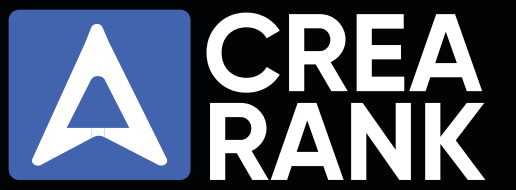Pay-Per-Click Advertising for Business-to-Consumer (B2C) Enterprises
PPC functions on the same principles for both Business-to-Business (B2B) and Business-to-Consumer (B2C). The primary distinction lies in the unique challenges faced by B2C, primarily in the form of a highly competitive landscape. In B2C, businesses often operate within intensely competitive markets, requiring effective differentiation from numerous competitors. Nonetheless, B2C enterprises can achieve success in the realm of PPC by developing intelligent strategies and implementing tactics to optimize their outcomes.
What does pay-per-click (PPC) advertising entail for Business-to-Consumer (B2C)?
Pay-per-click (PPC) advertising for Business-to-Consumer (B2C) involves promoting your offerings on search engine result pages (SERPs) based on specific keywords or phrases of your choice. Winning the bid auction allows your ad to be displayed on the SERP, and when users click on your ad, they are directed to your site, and you incur a cost for that click.
The core principles of PPC remain consistent between Business-to-Business (B2B) and B2C. However, the key distinction, and a significant challenge for B2C, lies in the highly competitive landscape. B2C businesses often operate in markets crowded with numerous competitors, requiring effective strategies and tactics to stand out and optimize results in the realm of PPC.
In which platforms is PPC advertising accessible for Business-to-Consumer (B2C)?
B2C businesses have various options based on their strategies. While some PPC advertising platforms may require higher spending, others offer the chance to spend less by targeting specific audiences, leading to a higher return on ad spend (ROAS).
Google Ads
Google processes an astounding 95,000 search queries every second, amounting to almost 3 trillion searches annually. With each search, PPC ads are activated to appear prominently on individualized search results pages.
While Google unquestionably dominates the search engine scene, the immense volume poses a challenge for B2C businesses. Some keywords are intensely competitive on this platform, necessitating a larger ad spend. Strategic selection of target keywords is crucial to optimizing your ad spend.
Bing Ads
Bing Ads operates similarly to Google Ads, with the distinction of being tailored for Microsoft’s Bing search engine. While Bing boasts a somewhat lower cost per click (CPC), this advantage comes at the trade-off of a broader audience on Google.
Facebook Ads
Facebook Ads stands out as a widely used and efficient B2C PPC platform. This platform provides the capability to deliver ads to a highly segmented audience, allowing targeting based on factors like interests, demographics, location, and behaviors.
An additional benefit of Facebook Ads is its incorporation of native advertising. Native advertising entails paid ads seamlessly integrating with the appearance, tone, and functionality of the media format in which they are placed. By refining your target audience, your ads naturally integrate into a user’s feed, fostering increased clicks and conversions. Notably, Facebook also encompasses Instagram, enabling direct advertising on Instagram through the Facebook Ads platform.
AdRoll
AdRoll functions as a retargeting platform, specifically designed to target individuals who have previously navigated through your website. Leveraging comprehensive data derived from online shopper activities, AdRoll anticipates user behavior, assesses ad engagement, and evaluates store performance. Employing display ads, AdRoll strategically retargets users across various platforms they explore, spanning search engines and social media sites.
RevContent
RevContent emerges as a contemporary advertising platform with a primary focus on native advertising through PPC strategies. The process involves bidding on keywords, and upon winning, your ad gets showcased on relevant content.
With RevContent, your content wields a similar impact to a guest post, appearing on an external site, albeit in the form of an ad. Noteworthy is the platform’s distinction in providing the lowest bid and deposit, rendering it an exceptionally budget-friendly alternative compared to other PPC platforms.
However, affordability isn’t the sole forte of RevContent. The platform stands out with a multitude of interest targeting options, ensuring a low CPC coupled with targeted, actively engaged traffic.
How does PPC advertising operate for B2Cs?
The mechanics of PPC advertising for B2Cs closely mirror those for B2Bs. It involves bidding on specific keywords tailored to reach a particular audience, ultimately enhancing traffic and driving conversions to your website.
Why opt for B2C PPC advertising?
B2C PPC advertising offers an extended reach, widening your market and boosting sales. Here are some advantages:
- Cost-effectiveness of PPC ads
- Swift results from PPC ads
- Ease of testing and controlling PPC ads
- Precise targeting of ideal customers through PPC ads
- Visibility in SERPs even with low domain ratings via PPC ads
- Improvement of your SEO strategy through data obtained from PPC ads
Beginning with B2C PPC: Where to Start
Initiating B2C PPC is akin to unveiling a new product or service, demanding a well-thought-out plan as your initial step. While patience and testing are integral, there’s no need to allocate funds blindly, hoping for success. Crafting an intelligent strategy to optimize your budget is key to achieving optimal outcomes.
Establishing Parameters
One of the primary steps in commencing your B2C PPC journey is defining parameters. This ensures your ads are effective and targeted. Consider your PPC campaigns in alignment with your business objectives, determining how they contribute to these goals. Consider the desired accomplishments of your ads and the allocated budget necessary to achieve them.
Key Components for Your Strategy:
- Define Your Target Audience
- Establish the Campaign Theme
- Determine Success Metrics
- Choose the Campaign Type
Establish Objectives and Select Goal Metrics:
Ensure your objectives are quantifiable and attainable, serving as tangible outcomes for your advertising investment. Distinguish these from your campaign metrics:
- Lead Generation: Track engagement on your landing page post-advertisement, utilizing tracking pixels or UTM parameters.
- Sales Metrics: Gauge product or service sales attributed to your paid ads, utilizing CMS software or attribution reporting.
- Promotion Success: Monitor the effectiveness of limited-time offers, discounts, or contests, employing dedicated sign-up pages or unique promo codes for user tracking.
Select Platforms and Campaign Types:
Tailor your campaign types to align with the most suitable PPC advertising platforms. Consider your target audience and the optimal approach to engaging them through paid advertising. While there isn’t a one-size-fits-all platform, a strategy employing a mix of campaign types can yield significant success, contingent on continuous testing and refinement.
- Search Ads: The prevalent form of PPC, these are text ads appearing on search engine results pages like Google and Bing.
- Display Ads: Visual online advertisements visible on various websites constitute display ads.
- Social Ads: Advertisements showcased on social media platforms such as Facebook, Instagram, LinkedIn, and Twitter fall under the category of social ads.
- Remarketing: Target individuals who have previously interacted with your brand through remarketing efforts.
- Google Shopping: An effective B2C PPC ad type for product-centric businesses, Google Shopping ads feature images, prices, and brief descriptions on a search page carousel.
Conduct Keyword Research
Within your campaigns, there exist ad groups, each designated to target a specific set of keywords centered around a specific theme. These keywords determine when your ad will be displayed, contingent on winning the bid auction. A general guideline is to incorporate one to five related keywords per ad group.
Should you identify new keywords outside your existing ad groups, it’s advisable to create a new ad group dedicated to them. Keep a close eye on your keywords post-inclusion, adjusting them to minimize irrelevant traffic while increasing bids on keywords drawing in more pertinent users. Achieving precise targeting often involves experimentation.
Implement Google Analytics and Tracking
Utilize Google Analytics, a cost-free tool, to gather crucial data on your website’s performance, encompassing user interactions and content popularity. The insights garnered from Google Analytics can be instrumental for both PPC and SEO strategies.
Within your campaigns, there exist ad groups, each designated to target a specific set of keywords centered around a specific theme. These keywords determine when your ad will be displayed, contingent on winning the bid auction. A general guideline is to incorporate one to five related keywords per ad group.
Should you identify new keywords outside your existing ad groups, it’s advisable to create a new ad group dedicated to them. Keep a close eye on your keywords post-inclusion, adjusting them to minimize irrelevant traffic while increasing bids on keywords drawing in more pertinent users. Achieving precise targeting often involves experimentation.
Strategies for Effective Management of B2C PPC Campaigns
1. Establishing Attainable Objectives
The cornerstone of triumph in B2C PPC campaigns lies in crafting clear and strategic goals. These goals act as a linchpin, distinguishing a thriving campaign from one that falters and ensuring alignment with overarching business objectives. The effectiveness of your endeavors can be heightened by adopting SMART goals—ones that are specific, measurable, achievable, relevant, and time-bound.
2. Aligning Campaigns with the Sales Funnel
Effective execution of B2C PPC involves aligning campaign objectives with your sales funnel. Segregating non-branded keywords into categories like problem-aware and solution-aware can optimize your budget allocation. Typically, solution-aware queries, positioned lower in the funnel, tend to yield superior and more lucrative leads.
3. Crafting PPC Ad Copy
While bidding on keywords ensures visibility, compelling ad copy is the catalyst that encourages clicks from your audience.
In search ads, you have the opportunity to optimize the headline, URL, and concise description, each constrained by character limits. To capitalize on this limited space:
- Directly address your target persona
- Incorporate the primary keyword from your ad group
- Present a clear Call to Action (CTA) guiding the searcher on the next steps
- Align your language with the content of your landing page
- Conduct A/B split tests on your ad copy to determine the most effective approach.
4. Conducting A/B Testing
Testing is an integral part of marketing, and PPC ads are no exception. A/B testing plays a pivotal role in enhancing the success of your paid ad campaign, aiming to boost both clickthrough rates and conversion rates.
An advertisement comprises a headline, description, landing page, and target keywords. When conducting ad tests, even subtle adjustments to any of these elements can yield significant changes in outcomes. Implementing incremental changes one at a time aids in maintaining organization, allowing you to track the source of improvements effectively.
5. Vigilant Keyword Monitoring
Regular evaluation of your ad groups’ performance is paramount in B2C PPC, ideally conducted at least once a month, if not more frequently. PPC is a dynamic strategy that demands ongoing attention rather than a ‘set-and-forget’ approach. Regular keyword assessment is indispensable for maximizing the efficacy of your paid advertising efforts.
Increase Your Revenue through B2C PPC Services
Now that you have a grasp of what PPC entails for B2C companies, it’s time to integrate it into your business strategy, and CreaRank is here to assist you in taking the first steps!
Our PPC management services are designed to support you in optimizing your B2C PPC campaigns, incorporating the outlined tactics and beyond. Additionally, you’ll benefit from a dedicated account representative who will keep you well-informed about every aspect of our services on your behalf.

